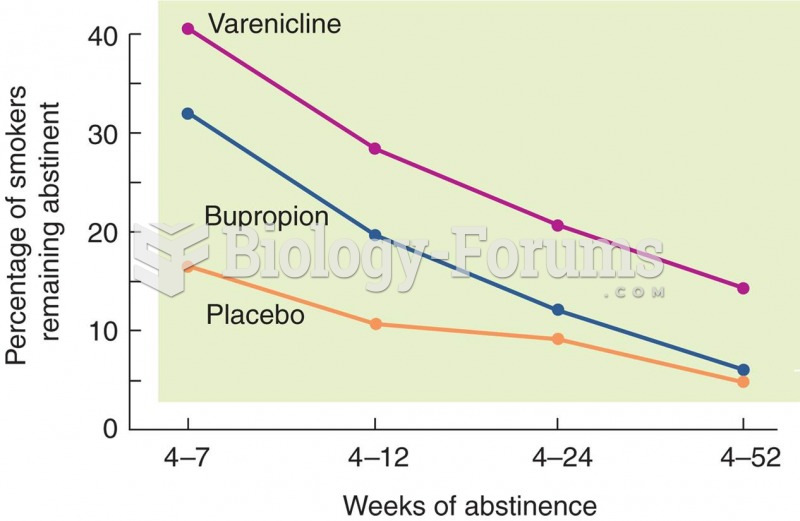Answer to Question 1
Correct Answer: 2
Rationale 1: The client has new-onset confusion, which is not a normal outcome of aging. The confusion is related to decreased oxygen supply to the brain. This is not the priority nursing diagnosis.
Rationale 2: High risk for falls is the priority because the client is accustomed to being ambulatory but can move around less safely now due to weakness and confusion.
Rationale 3: The client does need education about the condition and its treatment. The early phase of treatment is not an optimal time to teach, because confusion impairs learning.
Rationale 4: The client's walking is impaired, but this is not the priority nursing diagnosis.
Global Rationale: High risk for falls is the priority because the client is accustomed to being ambulatory but can move around less safely now due to weakness and confusion. The client has new-onset confusion, which is not a normal outcome of aging. The confusion is related to decreased oxygen supply to the brain. This is not the priority nursing diagnosis. The client has new-onset confusion, which is not a normal outcome of aging. The confusion is related to decreased oxygen supply to the brain. This is not the priority nursing diagnosis. The client does need education about the condition and its treatment. The early phase of treatment is not an optimal time to teach, because confusion impairs learning. The client's walking is impaired, but this is not the priority nursing diagnosis.
Answer to Question 2
Correct Answer: 2,3
Rationale 1: The vial should be gently rotated, never shaken, to mix the contents.
Rationale 2: The medication should be warmed. A good method for warming medication is to hold the vial in the hand for a few minutes.
Rationale 3: The client must be accurate in drawing up the medication.
Rationale 4: Vials are for one-time use only, and remaining medication should be discarded.
Rationale 5: While all medications should be kept out of the reach of children, Epogen must be refrigerated.
Global Rationale: The medication should be warmed. A good method for warming medication is to hold the vial in the hand for a few minutes. The client must be accurate in drawing up the medication. The vial should be gently rotated, never shaken, to mix the contents. Vials are for one-time use only, and remaining medication should be discarded. While all medications should be kept out of the reach of children, Epogen must be refrigerated.







